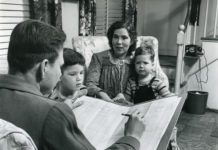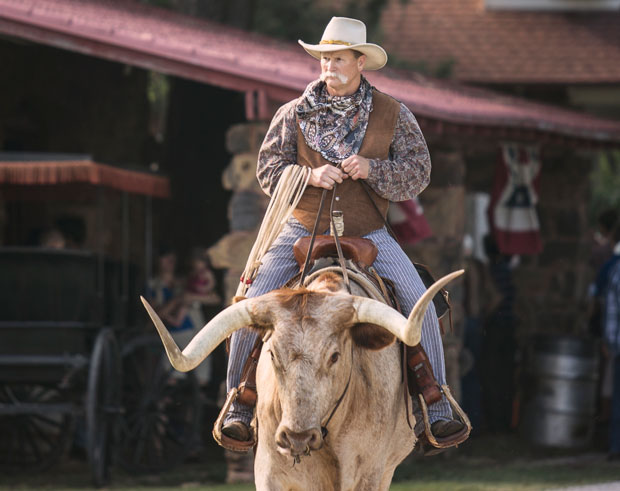When rail travel to the West was at its peak, journeys often were long, dirty and grueling. The majority of passengers, already exhausted from travel, were forced to provide their own food or settle for whatever less-than-inspiring culinary options might appear along the way.
Enter Fred Harvey, a British transplant who had spent years in the New York restaurant business before joining forces with the Atchison, Topeka and Santa Fe Railway. Harvey, a savvy businessman, leaped at the opportunity to provide railroad passengers a taste of civilization in the rough-and-tumble West. “Harvey Houses,” as they became known, were high-quality restaurants that offered travelers such satisfying and elegant meals as Roast Sirloin of Beef Au Jus, Blue Oysters on the Half Shell and Charlotte of Peaches with Cognac Sauce, for the price of about 75 cents. In addition to presenting a sumptuous menu at a reasonable cost, the Harvey Houses accomplished the turnaround in a mere 20 minutes – the brief amount of time passengers were allowed between boarding trains.
Of the eight Oklahoma depots with Harvey Houses – Guthrie, Hugo, Pauls Valley, Purcell, Sapulpa, Snyder, Vinita and Waynoka – a handful, such as those in Guthrie, Hugo and Waynoka, have been preserved and are open to the public.
In Hugo, the Choctaw County Historical Society rescued its depot from demolition and transformed it into the Frisco Depot Museum, complete with a restaurant (The Busy Bee in the Harvey House) that includes a restored Harvey House Lunchroom.
Norman Pence, manager of the Frisco Depot Museum, estimates that during the height of the Hugo depot’s traffic, the Harvey House there served 200 to 300 weary travelers a day, demonstrating the popularity of the institution.
“Good wholesome food, speedily served by clean, well-dressed, well-trained waitresses, is a good recipe for any restaurant,” he says.
Also on display at the Frisco Depot Museum are preserved quarters and personal items of the women who helped make the Harvey Houses famous – the Harvey Girls. These attractive young ladies of education and moral fiber worked and lived at the Harvey Houses. Recognized by distinctive uniforms and impeccable service, Harvey Girls agreed in their contract to remain single for one year – at the end of which many were snapped up in matrimony by travelers.
“The Harvey girls established a standard for dress and decorum in settings that tended to be rough around the edges,” says Walter Eskridge, curator of education with the Oklahoma Museum of History.
Fred Harvey has been credited with civilizing the West and creating one of the first chain restaurants in the nation. And while the Atchison, Topeka and Santa Fe Railway has been relegated to the pages of history, the legacy of Oklahoma’s Harvey Houses is alive and well – and still open for business.

























